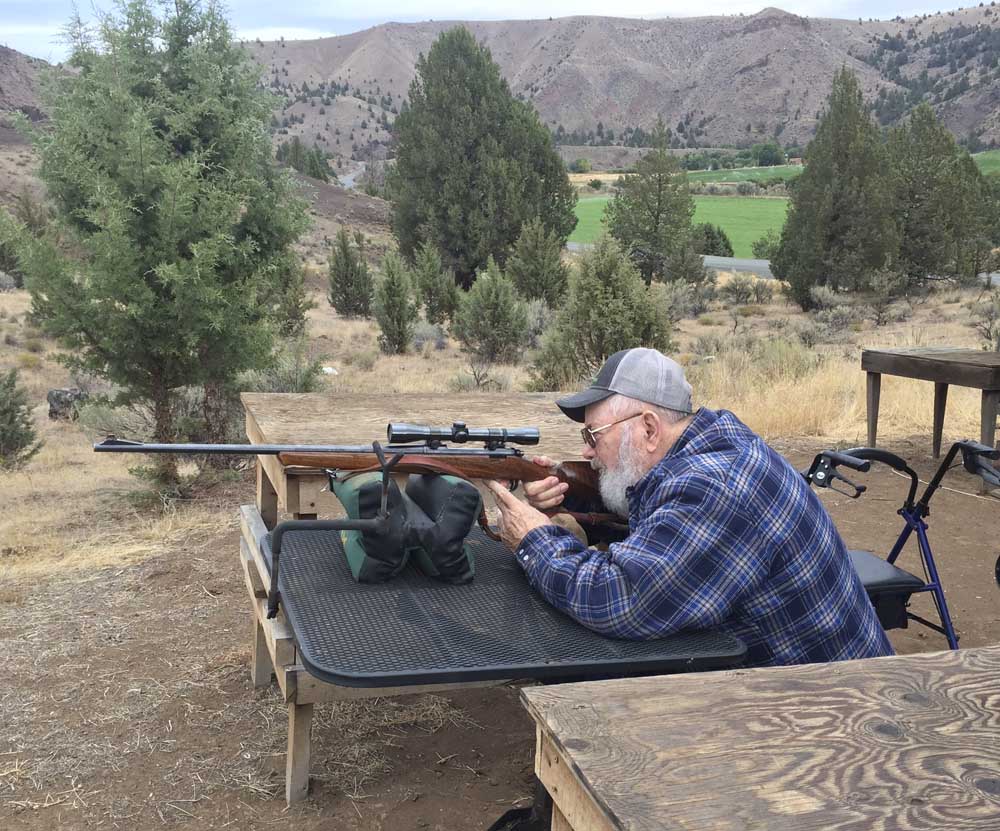Shooting the Breeze: Traditional plaid fabrics have a long and fascinating history
Published 6:15 am Friday, January 28, 2022

- Duane Turner, clad in a plaid jacket, sights in his favorite hunting rifle in 2020.
While not the tradition that it once was, hunters wearing red and black plaid as their choice of vestiture to attend their mountain synagogues for their devout observance of hunting season was once quite commonplace.
Trending
Traditionally considered of Scottish origin, plaid or tartan designs as we know them have been encountered in various world cultures as far back as the eighth century B.C.
The unique patterns of handwoven twill are most often related to the clans of Scotland in more recent history. The word “plaid” is taken from the Scottish Gaelic “plaide,” which when translated means blanket. At first mostly a rectangular full-size blanket worn over the shoulder as a sash or around the neck as a cape, but then socks, kilts and caps eventually adopted the tartan pattern.
Somewhere along the line the clans adopted their own unique tartans for daily vestiture. The representation of clan-specific plaid in Scotland, however, wasn’t officially adopted until the 1700s.
Trending
The first recorded use of the tartan as a military uniform, irrespective of any single clan pattern, was in the 1745 Scottish Rebellion. The Royal Highland Regiment wore a “Black Watch” pattern when they rose up against the rule of an oppressive English monarchy. After their resistance was crushed, England passed the Dress Act of 1746, which banned the wearing of plaid for all but military uniform applications.
The mass migration to the New World both before and after the American Revolutionary War brought a huge influx of tartan-clad settlers to the colonies and frontier alike.
The red and black MacGregor plaid — buffalo plaid, as it’s sometimes called today — was popularized by Jock McCluskey. McCluskey was a descendant of one of Scotland’s most famous outlaws, Rob Roy MacGregor. Jock traded his woven plaid blankets with Native Americans as far west as Montana Territory.
In 1850 the tartan received another popularity boost. The founder of Woolrich Woolen Mills, John Rich, traveled around selling buffalo check shirts and fabric to lumberjacks and their wives in the woods of Pennsylvania.
Plaid received further mainstreaming through the drawings of William B. Laughead featuring an oversized logger with a blue ox named Paul Bunyan and the 1924 release of plaid patterns from the Pendleton Mills.
While the red and black MacGregor or buffalo pattern is the most widely distributed and arguably useful for hunters, tartans of all kind are still in fashion today.
Even though camouflage and blaze orange may have edged plaid out in the hunting fields, tartan patterns are more popular than ever in other venues. I think you would have to look pretty hard to find a hunting camp in Eastern Oregon that didn’t have at least one plaid-clad Elmer Fudd sitting around the campfire.
Whether you’re carrying a Browning or the bagpipes, the historic tartan pattern is a wonderful tradition still alive and well nearly 3,000 years later. Talk about longevity.
Do you wear plaid? Write to us at shootingthebreezebme@gmail.com and check us out on Facebook!








